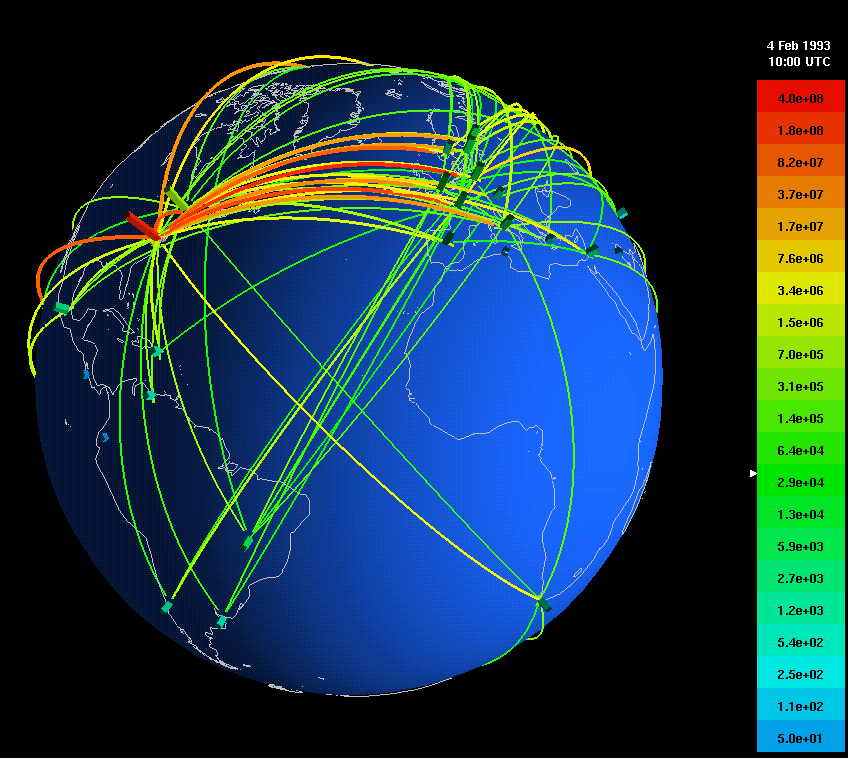|

Quality of carbohydrates (as expressed by the GI) in relation to health and well-being
Food chemists have typically categorized dietary carbohydrates into simple sugars and complex carbohydrates on the basis
of their degree of polymerization. This form of classification of carbohydrates is a well-established concept in food science.
However, the effect of carbohydrate on health may be better categorized according to their physiologic effects, notably their
ability to increase blood glucose. The blood glucose response varies substantially among different carbohydrate-containing
foods and cannot be predicted by their gross chemical composition alone. This gave rise to the concept of the GI.
The GI was developed by Jenkins et al. in 1981 as an improvement of the carbohydrate exchange list for diabetics.
It is a numerical ranking of carbohydrate foods defined as the incremental area under the blood glucose response curve of
a 50-g carbohydrate portion of a test food expressed as a percentage of the response to the same amount of carbohydrate from
a standard food (usually white bread or glucose) taken by the same subject. By this definition, carbohydrate foods are rated
as low (<55), medium (55–70), and high (>70) GI foods.
A series of studies have confirmed that consuming a low GI diet (<55) has a significant effect on decreasing hemoglobin
A1c and fructosamine, confirming that the widely used cutoff points for GI classification (<55, 55–70, and >70)
have an identifiable clinical outcome . Emerging data also suggest that the postprandial glycemic spike and the degree of
blood glucose excursion may also be of clinical importance. Foods that show smaller peak changes in glycemia and maximum amplitude
of the glucose excursion provide greater metabolic benefits to human subjects (Table )
Table . Association among GI, peak blood glucose changes, and MAGE
GI, glycemic index; MAGE, maximum amplitude of glucose excursion
The role of fasting blood glucose in the development of coronary heart disease is less well recognized, mainly because
of the paucity of studies correlating fasting blood glucose to coronary heart disease. Bjørnholt et al. reported
the results from a 22-y prospective study on fasting blood glucose as a predictor of cardiovascular death. Of 1990 apparently
healthy non-diabetic men (40–59 y old), 1973 with fasting blood glucose levels lower than 6.1 mmol/L (110 mg/dL) were
included in the study. After 22 y of follow-up, 483 men had died, 53% from cardiovascular diseases. It was also found
that men in the highest glucose quartile (fasting blood glucose >4.7 mmol/L [85 mg/dL]) had a significantly higher mortality
rate from cardiovascular disease compared with those in the lowest three quartiles .
The relation between fasting blood glucose and (A) stroke, (B) total ischemic heart disease,
and (C) cardiovascular death. Adapted from the Asia Pacific Cohort Studies Collaboration . CI, confidence interval.
Another study by the Asia Pacific Cohort Studies Collaboration
collated fasting blood glucose data from 237 468 participants; during approximately 1.2 million person-years of follow-up,
there were 1661 stroke and 816 ischemic heart disease events . Continuous positive associations were demonstrated between
usual fasting glucose (≥4.9 mmol/L) and the risks of cardiovascular disease. Each 1-mmol/L decrease in usual fasting
glucose was associated with a 21% (95% confidence interval 18–24) lower risk of total stoke and a 23% (19–27)
lower risk of total ischemic heart disease. The associations were similar in men and women, across age groups, and in Asian
compared with Australasian (Australia and New Zealand) populations. Fasting blood glucose is an important determinant of cardiovascular
disease burden, with considerable potential benefit of usual blood glucose lowering down to levels of at least 4.9 mmol/L.
For several decades the diet–chronic disease paradigm has centered on decreasing the intake of saturated fat and
cholesterol and increasing the consumption of complex carbohydrates. The type of carbohydrate consumed may be as or more important
than the type of fat consumed: It is here that the concept of the GI may have a significant role to play. The increased intake
of refined carbohydrates (i.e., high GI carbohydrates) in most Western diets may have aggravated the incidence of cardiovascular
disease and diabetes.
Is the health information found in the internet true or false ?

With numerous web sites on the internet, searching for nutrition and health information can be very confusing. The internet
will not offer any guarantee of the health informations found there, and most of it are just fiction. So web sites must be
evaluated for their accuracy.But how ? , the answer is simple , pay attention to the last few letters in a web site's name.
For example a site bearing the letters "gov" is a government site and usually posts valid information. Universities
use the extension "edu," which stands for educational institutions. The extension "com" stands for commercial,
a business web site; and "org" stands for organization.
|


